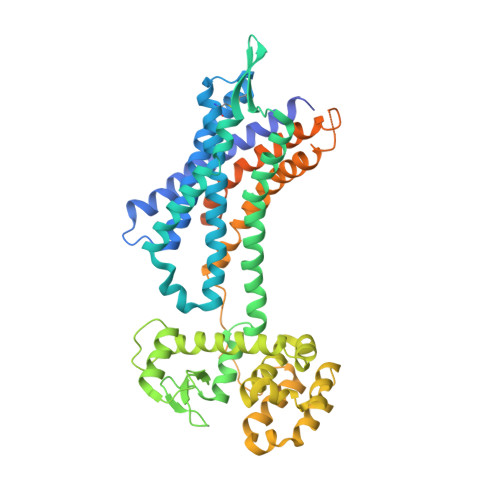Na+-mimicking ligands stabilize the inactive state of leukotriene B4receptor BLT1.
Hori, T., Okuno, T., Hirata, K., Yamashita, K., Kawano, Y., Yamamoto, M., Hato, M., Nakamura, M., Shimizu, T., Yokomizo, T., Miyano, M., Yokoyama, S.(2018) Nat Chem Biol 14: 262-269
- PubMed: 29309055
- DOI: https://doi.org/10.1038/nchembio.2547
- Primary Citation of Related Structures:
5X33 - PubMed Abstract:
Most G-protein-coupled receptors (GPCRs) are stabilized in common in the inactive state by the formation of the sodium ion-centered water cluster with the conserved Asp 2.50 inside the seven-transmembrane domain. We determined the crystal structure of the leukotriene B 4 (LTB 4 ) receptor BLT1 bound with BIIL260, a chemical bearing a benzamidine moiety. Surprisingly, the amidine group occupies the sodium ion and water locations, interacts with D66 2.50 , and mimics the entire sodium ion-centered water cluster. Thus, BLT1 is fixed in the inactive state, and the transmembrane helices cannot change their conformations to form the active state. Moreover, the benzamidine molecule alone serves as a negative allosteric modulator for BLT1. As the residues involved in the benzamidine binding are widely conserved among GPCRs, the unprecedented inverse-agonist mechanism by the benzamidine moiety could be adapted to other GPCRs. Consequently, the present structure will enable the rational development of inverse agonists specific for each GPCR.
Organizational Affiliation:
RIKEN Structural Biology Laboratory, Tsurumi-ku, Yokohama, Kanagawa, Japan.















